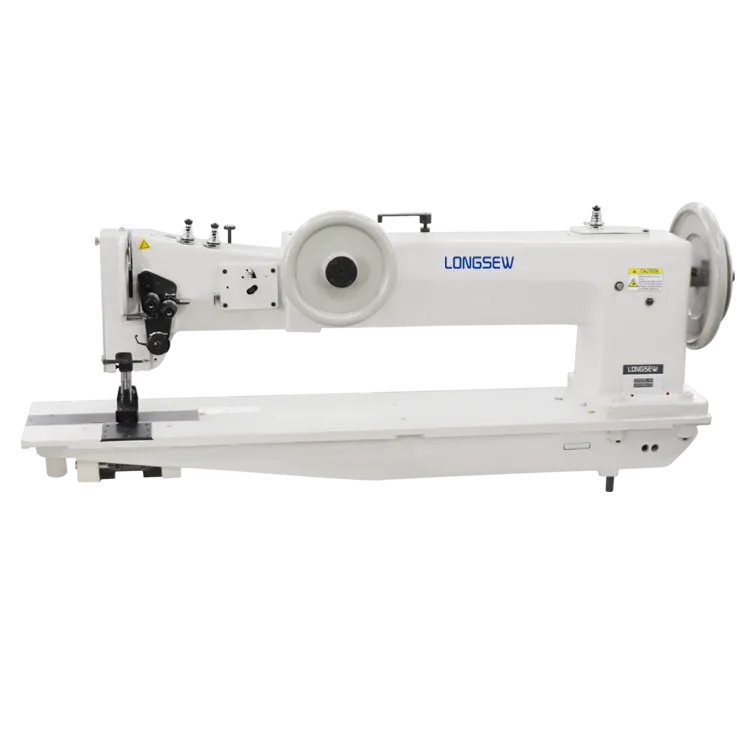Efficient Bulk Bag Sewing Machines for Seamless Production in Industrial Applications and Settings
The Evolution and Importance of Bulk Bag Sewing Machines
In the realm of industrial manufacturing, efficiency and productivity are paramount. One of the key players in this aspect is the bulk bag sewing machine, an essential tool for industries that rely on packaging bulk materials. As industries evolve and the demand for more efficient packaging solutions increases, these machines have become increasingly sophisticated, ensuring that they meet the diverse needs of various sectors.
Understanding Bulk Bag Sewing Machines
Bulk bag sewing machines are specially designed to sew and close large bags, often referred to as FIBC (Flexible Intermediate Bulk Containers), which are used to transport and store bulk materials. These bags are widely utilized across multiple industries, including agriculture, chemicals, pharmaceuticals, and construction, to name a few. The design of these machines allows for high-speed sewing while maintaining precision, ensuring that the bags are securely closed to prevent spillage and contamination during transportation.
Key Features and Innovations
Modern bulk bag sewing machines boast a range of features designed to enhance usability and efficiency. Some of the most significant advancements include automated sewing processes, which reduce the need for manual input and allow for consistent quality in production. Many machines now come equipped with advanced control systems that enable operators to adjust sewing speeds and patterns easily, accommodating different types of bags and materials.
Moreover, the incorporation of durable materials and innovative engineering solutions has resulted in machines that can handle heavier loads and thicker fabrics. This robustness is vital for industries requiring the packaging of heavy goods, as it ensures reliable performance over prolonged periods.
The Role of Automation
bulk bag sewing machine

Automation is one of the driving forces behind the evolution of bulk bag sewing machines. With the integration of robotics and AI, manufacturers can achieve higher levels of productivity while minimizing errors. Automated cutting, feeding, and sewing systems help streamline the process, enabling businesses to meet tight deadlines and high volume demands. As a result, businesses can allocate resources more efficiently, reducing labor costs and increasing profitability.
Environmental Considerations
As the world becomes more environmentally conscious, the packaging industry is not left behind. Manufacturers of bulk bag sewing machines have started producing machines that use eco-friendly materials and processes, reducing waste and energy consumption. Many companies are also looking into the recyclability of the bags themselves, urging the use of sustainable materials that align with global standards for environmental responsibility.
Challenges and Future Prospects
Despite the advancements, bulk bag sewing machines also face challenges. The need for regular maintenance and training for operators remains critical to ensure that machines run smoothly and efficiently. Additionally, factors such as fluctuating raw material prices and increasing competition require manufacturers to innovate continually and find cost-effective solutions.
Looking ahead, the future of bulk bag sewing machines looks promising. As industries continue to grow and evolve, the demand for efficient and reliable packaging solutions will only increase. Companies investing in the latest technologies, such as IoT (Internet of Things) for predictive maintenance and smart manufacturing, will likely lead the way in optimizing production processes and enhancing overall efficiency.
Conclusion
In conclusion, bulk bag sewing machines play a vital role in modern industrial manufacturing. With continuous advancements in technology and automation, these machines are set to become even more efficient and versatile. As industries face new challenges and opportunities, the ability to package bulk materials effectively will remain crucial, highlighting the importance of investing in high-quality bulk bag sewing machines for sustained growth and success.
-
Leather Sewing Machine: The Industrial Standard for Tough MaterialsNewsJul.18,2025
-
Sail Making Machine: Heavy-Duty Stitching for Industrial and Marine NeedsNewsJul.18,2025
-
Sling Sewing Machine: The Backbone of Heavy-Duty FabricationNewsJul.18,2025
-
Leather Sewing Machine: Precision for Heavy-Duty StitchingNewsJul.18,2025
-
Big Bag Sewing Machine: Powering the Future of Bulk PackagingNewsJul.18,2025
-
FIBC Sewing Machine: Essential Equipment for Bulk Bag ProductionNewsJul.18,2025
-
Heavy Duty Leather Sewing Machine: A Must-Have for Professional LeatherworkNewsMay.28,2025





























